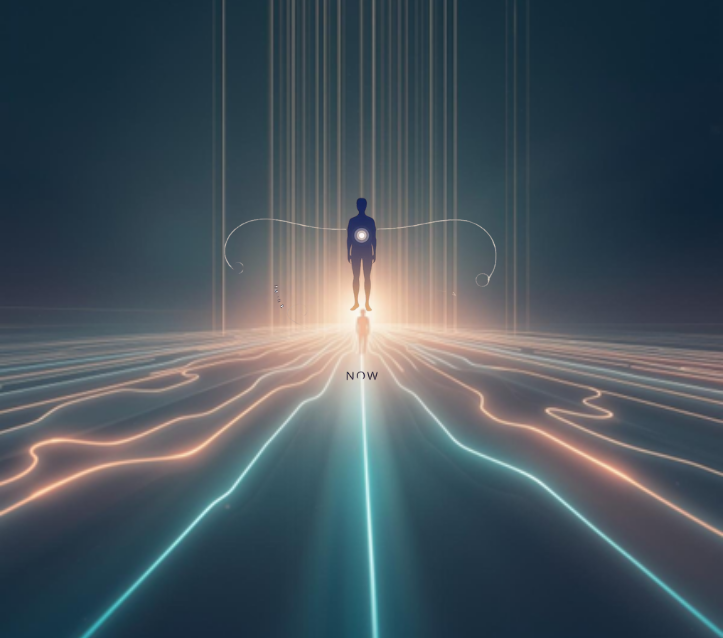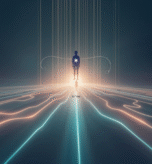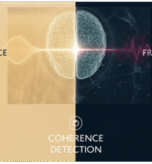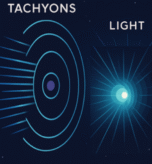
The phrase time travel instantly sparks imagination — wormholes, paradoxes, machines spinning us forward or backward through history. But the more we learn, the clearer it becomes: time is not a tube we move through. It is a coherence-based phenomenon — a pattern shaped by the relative motion and size of everything, from galaxies down to atoms.
That changes the whole conversation. Before anyone builds a theory or a machine, there is a more important question to ask:
👉 How does an object, or a self, realize its own presence in the “now”?
Understanding this opens the door to two different possibilities.
1. Mind Positioning Across Time Frames
This is not science fiction — it’s something we already do in fragments every day.
- When you rehearse tomorrow’s meeting until you can feel the room, hear the words, and steady your response, you are already there in mind.
- When you relive a past success so vividly that it shapes your confidence now, you are already re-entering that event line.
No clocks are broken. No paradox is created. What you are doing is extending your presence forward or backward across time frames. Consciousness positions itself.
2. Full Body-and-Mind Positioning in Different Life Events
This is the dream most people imagine when they say time travel — physically transporting both body and mind into another point in history. In fiction, it takes engines, wormholes, or exotic matter.
But in reality, this would demand altering the entire fabric of relative motion that defines the “now.” Every atom of the body, every vibration of energy, would need to be shifted to a different alignment with the universe. At present, this remains a thought experiment — rich for stories, but beyond reach in practice.
The Real Pivot: Event Horizon Shifting
Both these paths point to the same truth: time itself is not controllable.
It is not a universal clock. It is not an object that flows. It is the emergent perception of coherence — a collective pattern of how matter and energy move and scale.
That means we need a new name for what we are actually talking about. Instead of “time travel,” we propose:
Event Horizon Shifting
Moving your anchor of presence from one event line to another, without treating time as a physical highway.
This reframing removes the paradoxes. You are not “breaking” time or “rewriting” history. You are shifting which event line your consciousness (and in fiction, perhaps your body) engages with.
Why This Matters
- It dissolves the illusion that time is a single, controllable variable.
- It shows that time is a coherence-based phenomenon — a relational perception, not a material tunnel.
- It gives us a new vocabulary: “Event Horizon Shifting” is more precise, more inspiring, and more useful than “time travel.”
Before You Try to Leave the Present
Every dream of leaving the present begins here: learning to hold the present.
Without knowing how you experience “now,” any attempt at future or past positioning collapses into confusion. But once you anchor presence, you can extend it — forward into likely futures, backward into known pasts. Even small practices like vivid rehearsal or reflective memory are already forms of ethical temporal movement.
This is not fantasy. It is not physics-breaking. It is simply the next step in how we understand intelligence, presence, and coherence.
Closing Thought
Event Horizon Shifting invites us to stop arguing over paradoxes and start exploring presence. It is not about escaping time, but about learning how to inhabit it more fully, across more than one line.
And that may be more powerful than any machine could ever offer.





